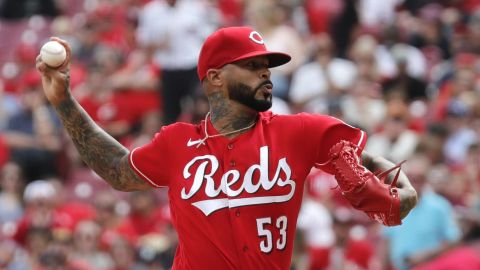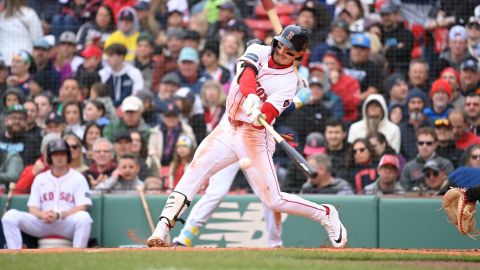 Sometimes it’s better to overpay up front to avoid paying even more down the line.
Sometimes it’s better to overpay up front to avoid paying even more down the line.
In many ways, that summarizes the Red Sox’ approach this offseason. General manager Ben Cherington hasn’t been shy about spending money, but he’s been steadfast on not handing out any long-term deals. That has meant overpaying in a few instances, and Monday’s reported signing of shortstop Stephen Drew is no different.
One could make the case that Cherington and Co. have overpaid for each of the free agents they’ve reportedly come to terms with this winter. Shane Victorino‘s three-year, $39 million deal seems high, as does the $39 million reportedly given to Mike Napoli, the $26.5 million reportedly handed to Ryan Dempster and the $10 million thrown at Jonny Gomes. But with the payroll down in the wake of August’s megadeal with the Dodgers, the Red Sox can afford to overpay, especially if it means they won’t be hampered with bad contracts down the road.
Drew’s situation was a bit different, but in overpaying for one year of the shortstop’s services, the Red Sox are taking a similar approach. The veteran shortstop likely wasn’t going to garner a multiyear deal elsewhere, having had back-to-back injury plagued seasons, but in coming over the top with a reported one-year, $9.5 million offer, the Red Sox ensured Drew would be donning a Boston uniform in 2013. That’s important, because it means the growth of the club’s other, younger shortstops won’t be stunted — something that would have been a threat had the Sox gone into opening day without adding a veteran shortstop like Drew.
Clearly, the Red Sox weren’t ready to hand the keys over to Jose Iglesias, whose offensive struggles are now as well documented as his defensive wizardry. Watching him hit .118 in 68 big league at-bats and .269 in 361 minor league at-bats last season provided enough proof that the 22-year-old could use some more seasoning before taking over as Boston’s everyday shortstop.
Xander Bogaerts, while far more impressive at the plate during his 2012 minor league campaign, could also use more time down on the farm. He’s still just 20 years old, and hasn’t played above Double-A, so labeling him “major league ready” would have been ill advised, to say the least.
With all of this considered, signing a veteran shortstop as a one-year stopgap became a major need for the Red Sox. They could have elected to go with Pedro Ciriaco as their everyday shortstop, but his versatility is what made him so valuable last year. Ciriaco is a much better fit for the club as a jack-of-all-trades, utility player than he is as a permanent fixture in the Boston lineup.
Drew isn’t without talent, either. He provides the Red Sox with plenty of offensive promise, and didn’t require the team to part ways with a draft pick in order to sign him. Drew has been banged up the past two seasons and hit just .223 in 287 at-bats in 2012, but he was one of the better offensive shortstops in baseball for a four-year span from 2007-10. In an offseason in which there is hardly any talent when it comes to shortstops available on the open market, Drew is not only the safest choice, but he has the highest ceiling given his past success.
The Red Sox aren’t just overpaying for one year of Stephen Drew — they’re overpaying for the opportunity to give Iglesias and Bogaerts at least one more year to develop, and that’s a worthwhile long-term investment.




